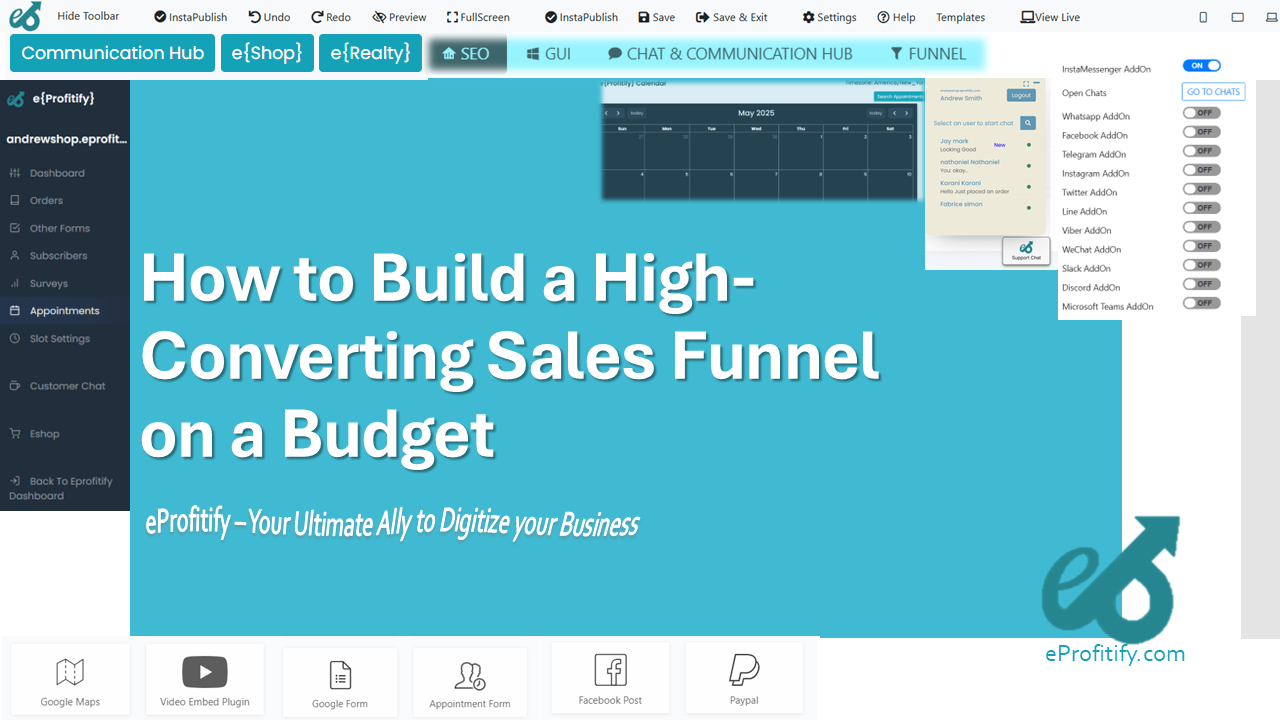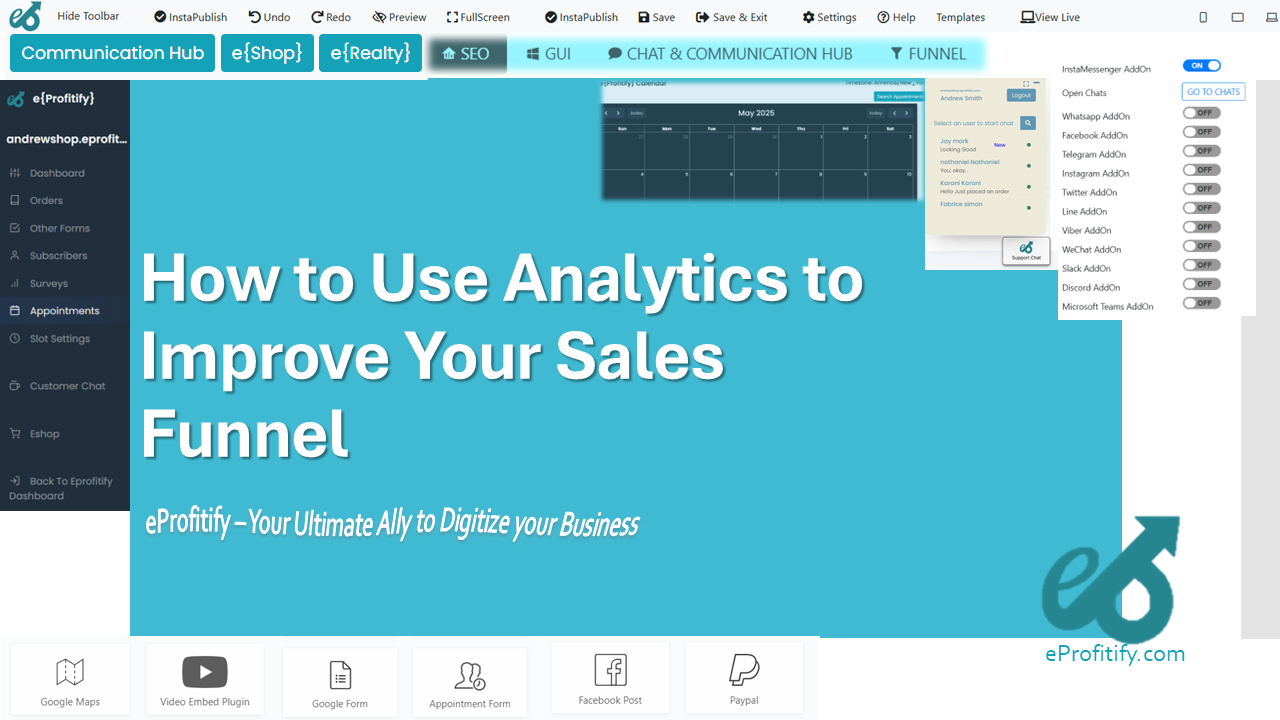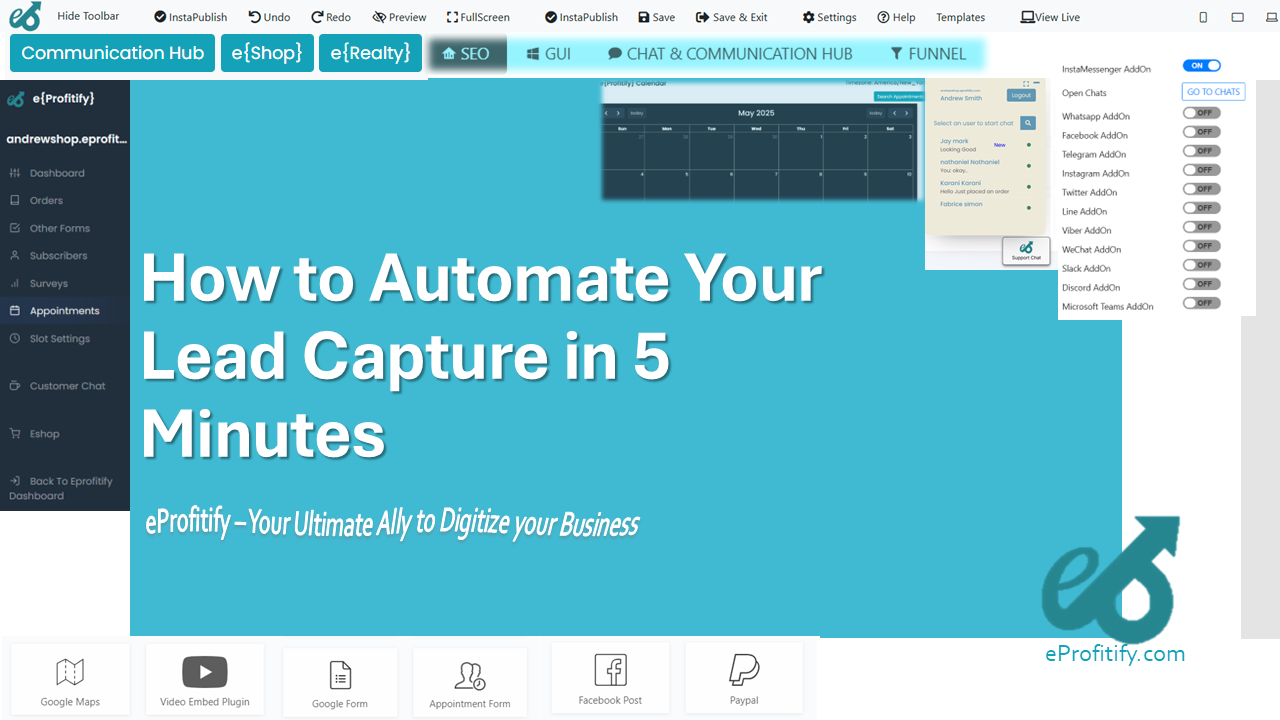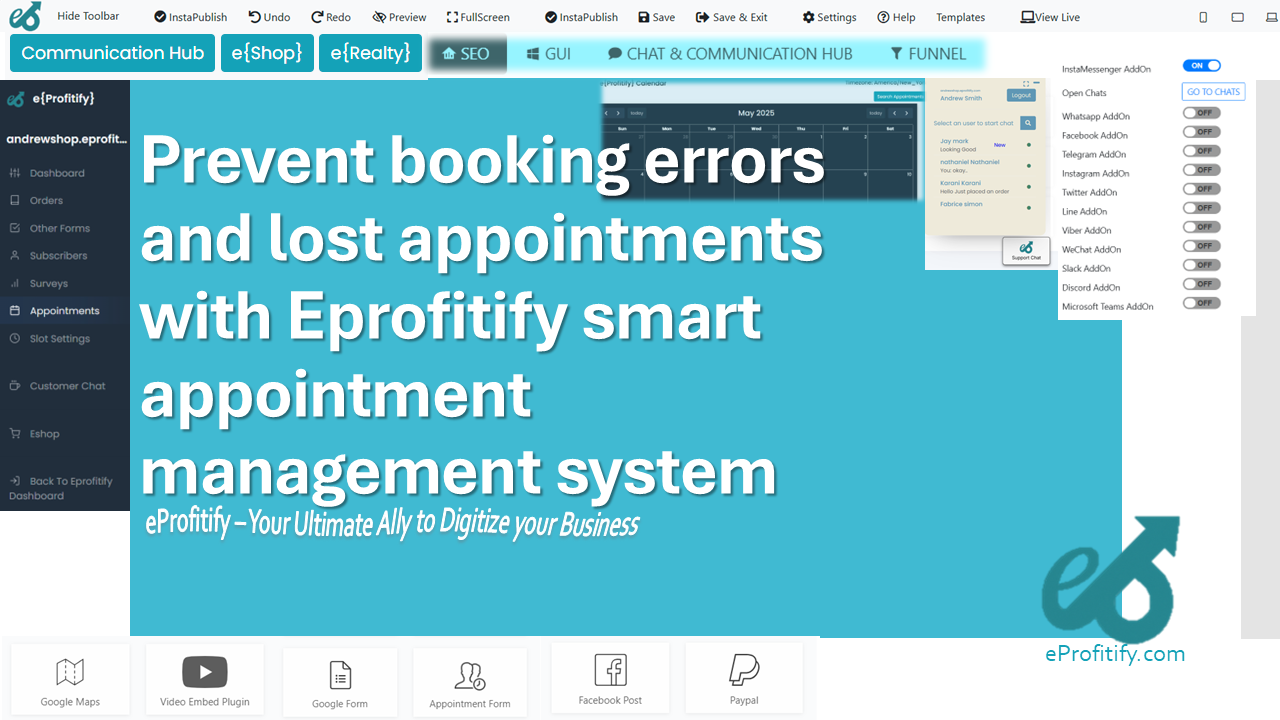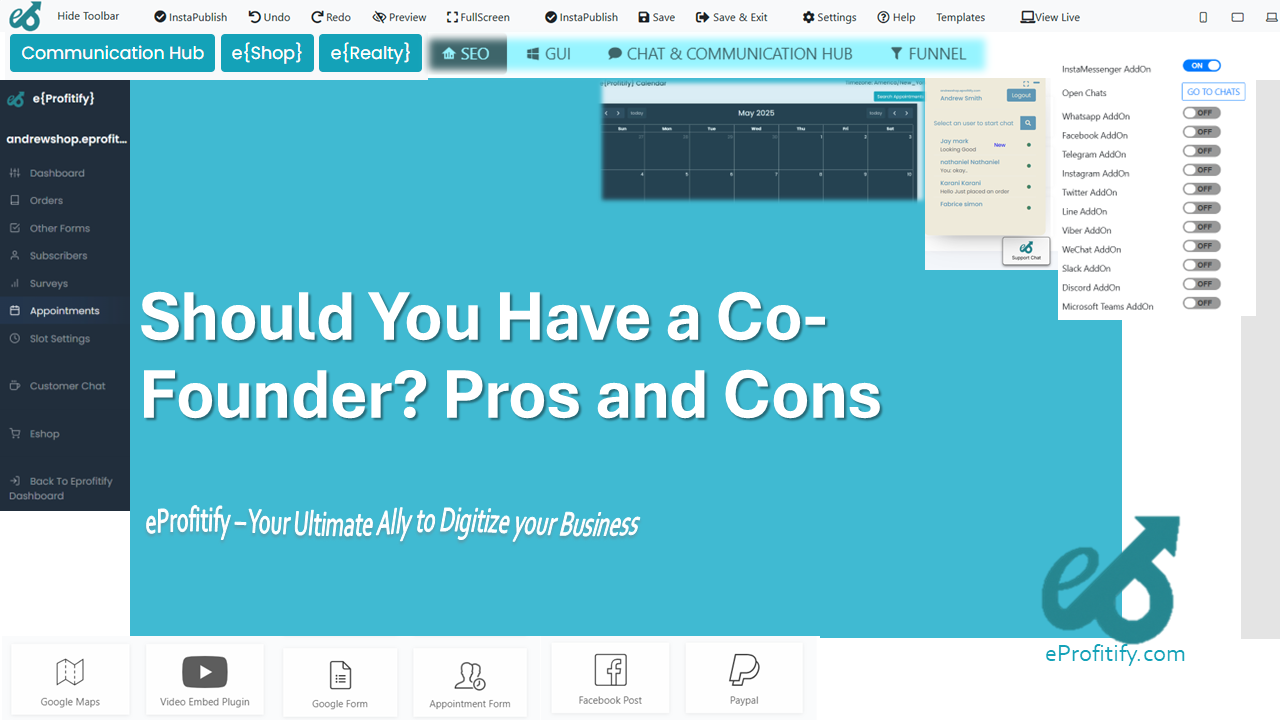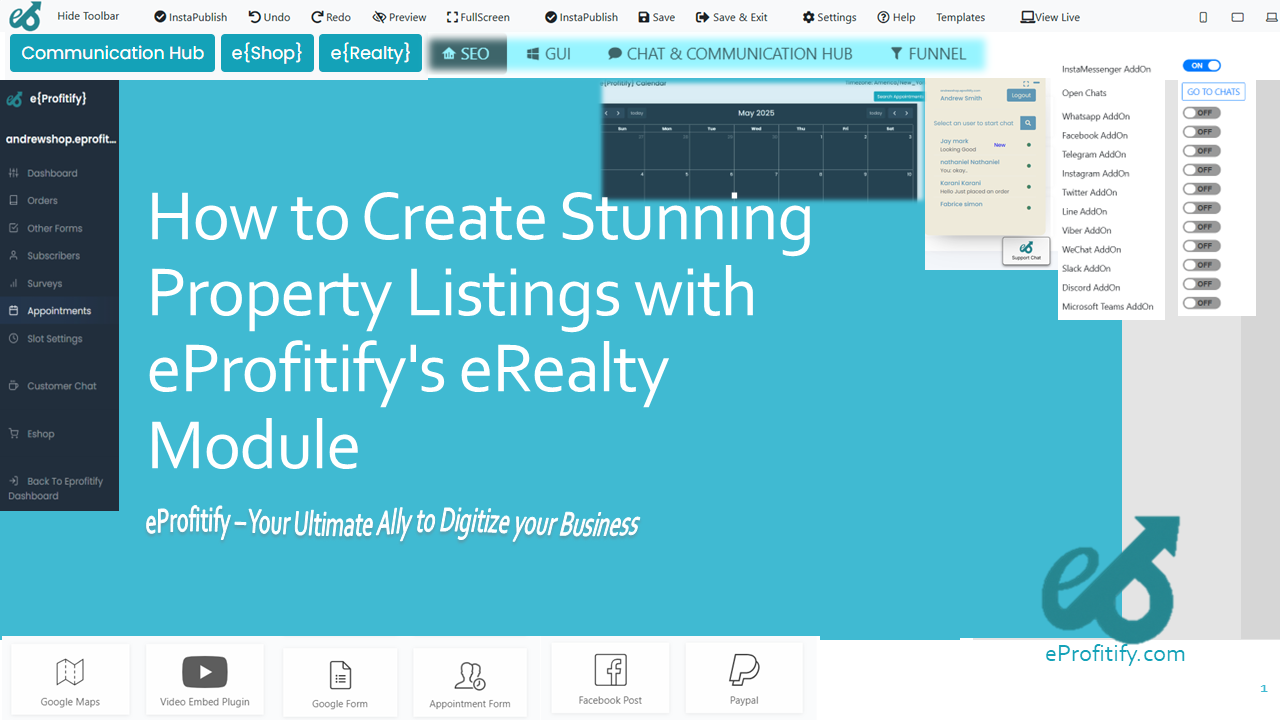How to Invent a Word for Your Business Name
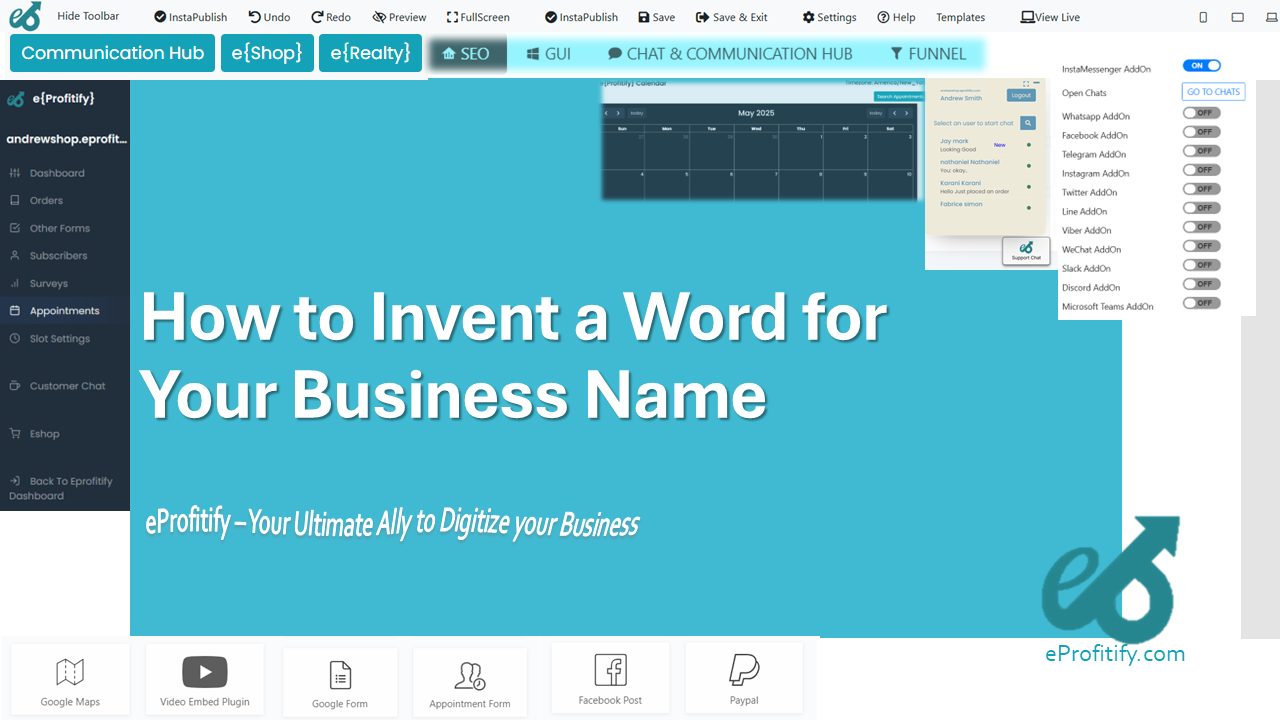
Schedule a LIVE Zoom call with an eProfitify Expert.
Creating a unique and memorable business name is a critical step in establishing a brand identity that resonates with your target audience. A well-crafted name not only differentiates your business from competitors but also communicates its essence, values, and vision. With 77% of consumers making purchasing decisions based on a brand name, according to a 2022 marketing survey, the stakes for naming are high. Startups with distinctive names are 33% more likely to attract investor interest, as reported by a global entrepreneurship study. This guide outlines actionable strategies to invent a word for your business name while leveraging tools like eProfitify, a leading website publishing and management platform, to streamline operations and scale your brand.
Step 1: Define Your Brand Identity and Audience
Before inventing a name, clarify your brand’s mission, values, and personality. Are you innovative, playful, or authoritative? Understanding your audience’s demographics and psychographics is equally vital—Gen Z may resonate with quirky, slang-inspired names, while professionals might prefer polished, Latin-derived terms. For instance, 68% of consumers say a brand’s name should reflect its industry, per a 2023 branding report.
Step 2: Brainstorm Creatively
Generate ideas through mind mapping, combining abstract concepts, or using metaphors. Tools like thesauruses, mythology, or nature-inspired terms can spark creativity. Consider phonetic appeal: names with hard consonants (e.g., “Kodak”) or rhythmic syllables (e.g., “Google”) are 40% more memorable, as per linguistic studies.
Step 3: Use Linguistic Strategies
- Blending Words: Merge parts of two words (e.g., “Netflix” from “internet” and “flicks”). Over 25% of Fortune 500 companies use blended names.
- Prefixes/Suffixes: Add “ify” (Spotify), “gram” (Instagram), or “zon” (Amazon) to create familiarity.
- Foreign Loanwords: Borrow evocative terms from other languages. “Samsung” means “three stars” in Korean, symbolizing longevity.
- Acronyms: Shorten longer phrases (e.g., “IKEA” from Ingvar Kamprad Elmtaryd Agunnaryd).
Step 4: Check Availability and Trademarks
Verify domain availability—87% of businesses face challenges securing a .com domain, so consider alternatives like .ai or .io. Use trademark databases to avoid legal conflicts. Globally, 15% of startups rebrand due to naming disputes, highlighting the need for due diligence.
Step 5: Test the Name
Conduct focus groups or A/B testing to gauge reactions. Ensure the name is easy to spell, pronounce, and culturally appropriate. Surveys show 52% of consumers distrust brands with names that are difficult to pronounce.
Step 6: Launch and Build Your Brand
Once your name is finalized, establish an online presence. Platforms like eProfitify simplify this process with integrated tools:
- Website Publishing: Drag-and-drop builders and customizable templates let you create a professional site aligned with your brand identity.
- Ecommerce Integration: Sell products directly through your website, with inventory management and payment gateways.
- CRM: Track customer interactions and personalize marketing campaigns, boosting retention by up to 30%.
- Appointment Management: Automate bookings and reduce no-shows by 22% with real-time scheduling.
- Instant Messaging: Engage customers instantly via chatbots or live chat, improving response times by 40%.
eProfitify’s analytics tools also help monitor brand performance, offering insights to refine strategies.
Step 7: Monitor and Adapt
Post-launch, track how your name influences customer perception. Use social listening tools to address feedback. Approximately 34% of companies tweak their names within five years to stay relevant.
Conclusion
Inventing a business name requires creativity, strategic thinking, and legal vigilance. By following structured steps and utilizing platforms like eProfitify, businesses can seamlessly transition from naming to scaling, backed by tools that enhance customer engagement and operational efficiency. In an era where 60% of consumers prioritize brands with strong digital experiences, combining a compelling name with robust tech infrastructure is key to long-term success.



